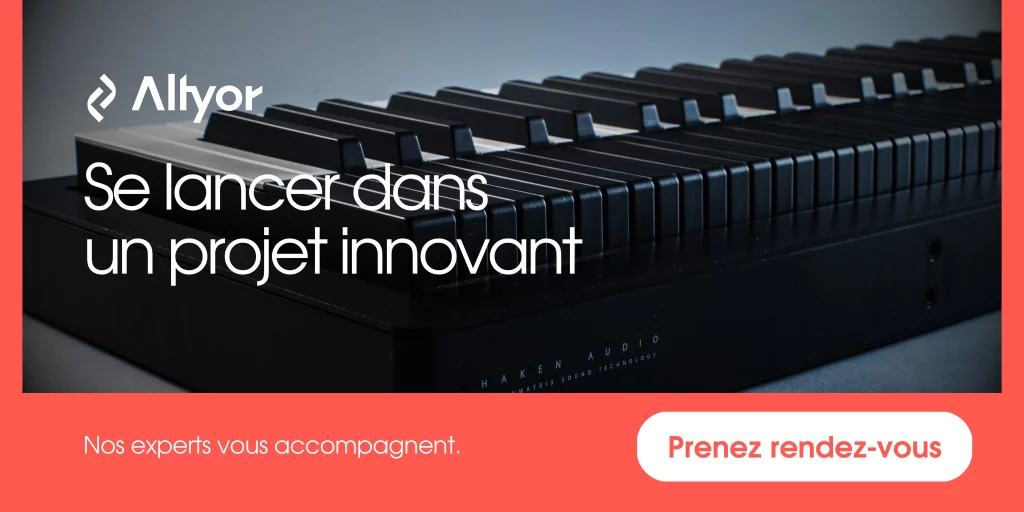Are you developing a new product? Every week saved and every mistake avoided counts. 3D prototyping, based on 3D printing technologies, allows you to transform an idea into a physical model in just a few hours.
The result: you can validate shapes, volumes, design and ergonomics from the earliest stages of design, before incurring heavy costs in tooling or industrialization
At Altyor, we consider 3D prototyping to be much more than just a technical step: it is a strategic lever for reducing time-to-market, securing your investments and convincing your customers and partners more quickly.
Mock-ups, 3D prototyping and rapid prototyping: what are the differences?
Mock-up: the first materialisation of a product
A mock-up is a non-functional model designed to represent a product even before its technical development. Its role is to validate the appearance, proportions and ergonomics, but also to convince stakeholders (investors, customers, internal teams).
Produced at a very early stage, it often combines SLA 3D printing (for finesse and visual rendering) and photorealistic 3D renderings. In short, the mock-up is used primarily to attract and project, rather than to test feasibility.


3D prototyping: testing volumes and ergonomics
3D prototyping, POC and MVP are often confused. However, they do not play the same role.
A POC (Proof of Concept) is a project stage: it serves to demonstrate the feasibility of a key function, such as the accuracy of a sensor or the autonomy of an electronic module.
An MVP (Minimum Viable Product) is also a project stage, but market-oriented: it involves testing a minimal but usable product with real users to validate its interest and use.
3D prototyping is not a step in the process: it is a rapid manufacturing technique that allows an idea to be brought to life in physical form using 3D printing.
👉 Mock-up, POC, MVP: the key stages of electronic prototyping
Rapid prototyping: a broader framework
Rapid prototyping encompasses all processes used to manufacture a model in a short period of time: 3D printing, CNC machining, laser cutting, etc. 3D prototyping is just one subset of this, particularly valued for its speed of iteration, cost-effectiveness and accessibility.
The advantages of 3D prototyping for manufacturers
The use of 3D prototyping is not limited to saving time. It is a measurable business lever.
Save weeks on your time to market with 3D prototyping
In competitive markets, releasing a product a few weeks earlier can make all the difference. 3D prototyping enables rapid iterations: printing, testing, correcting and reprinting, sometimes all in the same day. The improvement cycle is shortened and decision-making is accelerated.
👉 Discover the key levers for reducing your time to market
Validate design, ergonomics and integration prior to industrialization
A 3D prototype allows you to evaluate the actual size, handling, assembly, and compatibility with mechanical and electronic components.
This is invaluable for defusing errors that would become costly once the moulds are launched.
Secure your industrial budget with 3D prototyping
Correcting errors after tooling has been produced is very costly. Multiplying 3D prototypes upstream makes it possible to eliminate design flaws early on, optimize integration and secure the industrialization budget.
Convince partners and customers
A physical prototype reassures and engages decision-makers. It is more powerful than a virtual rendering: you can handle the object, imagine its uses, and make decisions more quickly.
3D printing technologies: how to choose the right solution?
Not all 3D printing technologies offer the same benefits. Here is a comparison to help you choose the right one for your objectives:
👉 If your priority is visual appeal (trade shows, investment committees), use SLA technology. To iterate quickly and often at a lower cost, go with FDM technology.
Should 3D prototyping be internalised or outsourced?
Internally, that may be enough…
Buying a 3D printer is useful for basic models. But when it comes to industrial projects, the situation changes:
- Covering multiple technologies (FDM, SLA, SLS) requires significant investment and a wide range of skills.
- Without a DFM (Design for Manufacturing) approach, you risk ending up with a prototype that looks good but is impossible to manufacture.
- Teams are becoming fragmented, to the detriment of their core business.
With an expert partner, you gain peace of mind.
When you choose Altyor, you benefit from:
✅ Overall support: from the initial idea to a functional prototype, ready for industrialization.
✅ Multi-technology access to choose the right solution for your needs (visual mock-up, integration prototype, pre-production series).
✅ An industrial culture: anticipation of certifications, BOM, procurement, series costs.
✅ A responsible approach: recycled/bio-based materials, optimized iterations to limit waste and carbon footprint.
✅ Integrated 3D printing capability with our mechanical design office. Responsiveness and confidentiality guaranteed.
👉 You accelerate your projects while ensuring their smooth transition to production.

3D prototyping has become a decisive step: it allows for rapid validation of design and ergonomics choices, reduces costs associated with design errors, and accelerates time to market.
Do you have a project in mind? Contact Altyor to transform your ideas into reliable, convincing 3D prototypes that are ready for industrialization, whether it’s a premium mock-up, an integration prototype or a pre-production test series.



